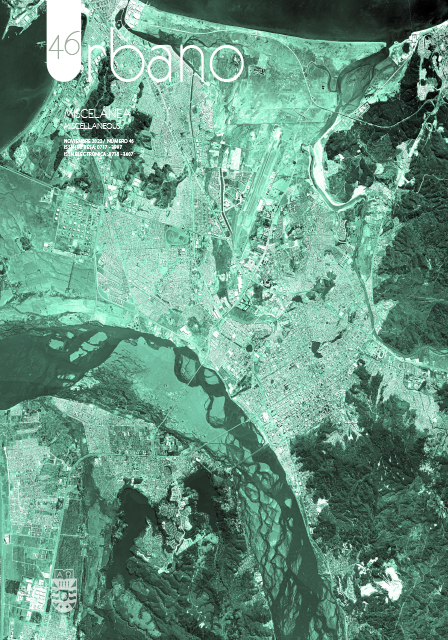Place attachment and volcanic risk perception of older adults in Ñuble, Chile
DOI:
https://doi.org/10.22320/07183607.2022.25.46.01Keywords:
volcanic risk, risk perception, place attachment, social vulnerability, older peopleAbstract
Chile has a high degree of exposure and susceptibility to disaster risk scenarios, and it is among the top five countries in the world regarding active volcanoes. Meanwhile, sustained population aging is making the older population vulnerable to potential socio-natural disasters. This article, using these concepts, seeks to understand the relationship between place attachment and the perception of volcanic risk among the older population, focusing on older adults residing in the hazard zone of the Nevados de Chillán volcanic complex in the Ñuble Region in southern Chile. Using a phenomenological qualitative case design, 15 semi-structured interviews and a focus group were applied, with the analysis carried out based on grounded theory. The results indicate that the older population has a low perception of volcanic risk, entailing i) the minimization of the surrounding natural hazards, ii) informal knowledge based on previous experiences, and iii) ignorance of the natural risk characteristics and their negative consequences. On the other hand, it is seen that place attachment and social vulnerability act not only as contextual barriers to accepting the volcanic risk but also lead to a lack of engagement, acquisition, and deployment of individual and collective coping mechanisms. In conclusion, the authors outline the importance of including “aging in place” and the active agency of the older population in socio-natural disaster risk planning and local management processes.
Downloads
References
ACEROS, J. (2018). “En casa mientras puedas”. Construcción discursiva del apego al hogar en personas mayores. Athenea Digital, 18(3), e2093. DOI: https://doi.org/10.5565/rev/athenea.2093
ANTON, C. Y LAWRENCE, C. (2014). Home is where the heart is: The effect of place of residence on place attachment and community participation. Journal of Environmental Psychology, 40, 451-461. DOI: https://doi.org/10.1016/j.jenvp.2014.10.007.
ARRIAGADA, C., VALLEJOS, M., QUEZADA, M., MONTECINO, L. Y TORRES, M. (2016). Resignificación de la experiencia de vida en adultos mayores afectados por tres tipos de desastre en Chile. Forum Qualitative Social Research, 17(1) 1-34. DOI: http://dx.doi.org/10.17169/fqs-17.1.2294
BERROETA, H., PINTO DE CARVALHO, L., DI MASSO, A. Y OSSUL VERMEHREN, M. I. (2017). Apego al lugar: una aproximación psicoambiental a la vinculación afectiva con el entorno en procesos de reconstrucción del hábitat residencial. Revista INVI, 32(91), 113-139. DOI: https://dx.doi.org/10.4067/S0718-83582017000300113
BERROETA, H., RAMONEDA, A. Y OPAZO, L. (2015). Sentido de comunidad, participación y apego de lugar en comunidades desplazadas y no desplazadas post desastres: Chaitén y Constitución. Universitas Psychologica, 14(4), 1221-1233. DOI: https://dx.doi.org/10.11144/Javeriana.up14-4.scpa.
COLLER, X. (2005). Estudio de casos. Madrid: CIS.
CORBIN, C. Y PANGRAZI, R. (2001). Toward a Uniform Definition of Wellness: A Commentary. Research Digest, 3(15), 1-11. Recuperado de https://eric.ed.gov/?id=ED470691
COSTA-FONT, J., ELVIRA, D. Y MASCARILLA-MIRO, O. (2009). `Ageing in Place’? Exploring Elderly People’s Housing Preferences in Spain. Urban Studies, 46 (2), 295–316. https://doi.org/10.1177/0042098008099356.
CUTTER, S., BORUFF, B. Y SHIRLEY, W. (2003). Social vulnerability to environmental hazards. Social science quarterly, 84(2), 242-261. DOI: https://doi.org/10.1111/1540-6237.8402002
DAVIS, M. S., RICCI, T. Y MITCHELL, L. M. (2005). Perceptions of Risk for Volcanic Hazards at Vesuvio and Etna, Italy. Australasian Journal of Disaster and Trauma Studies, 2005(1). https://www.massey.ac.nz/~trauma/issues/2005-1/davis.htm
DE DOMINICIS, S., FORNARA, F., CANCELLIERI, U. G., TWIGGER-ROSS, C. Y BONAIUTO, M. (2015). We are at risk, and so what? Place attachment, environmental risk perceptions and preventive coping behaviours. Journal of Environmental Psychology, 43, 66-78. DOI: https://doi.org/10.1016/j.jenvp.2015.05.010
DIXON, H.; MURPHY, M., SPARKS, S., CHAVEZ, R., NARANJO, J., DUNKLEY, P., YOUNG, S., GILBERT, J. Y PRINGLE, M. (2010). The geology of Nevados de Chillán volcano, Chile. Revista Geológica de Chile, 26(2), 227-253. DOI: http://dx.doi.org/10.5027/andgeoV26n2-a06.
DZIALEK, J. (2013). Perception of Natural Hazards and Disasters. En P. Bobrowsky P.T. (Ed.), Encyclopedia of Natural Hazards. Encyclopedia of Earth Sciences Series (pp. 756-759). Dordrecht: Springer. DOI: https://doi.org/10.1007/978-1-4020-4399-4_265
FAVEREAU, M., ROBLEDO, L. Y BULL, M. (2018). Analysis of risk assessment factors of individuals in volcanic hazards: Review of the last decade. Journal of Volcanology and Geothermal Research, 365, 57-64. DOI: https://doi.org/10.1016/j.jvolgeores.2018.10.009.
FLICK, U. (2007) Introducción a la investigación cualitativa. Madrid: Ediciones Morata.
Hidalgo, M. y Hernández, B. (2001). Place Attachment: Conceptual and Empirical Questions. Journal of Environmental Psychology, 21(3), 273-281. DOI: https://doi.org/10.1006/jevp.2001.0221.
Instituto Nacional de Estadística [INE] (2017). Censo de Población y Vivienda, 2017. Recuperado de http://www.censo2017.cl/
Instituto Nacional de Estadística [INE] (2020). Adultos mayores en Chile: ¿Cuántos hay? ¿Dónde viven? ¿Y en qué trabajan? Recuperado de https://www.ine.cl/prensa/2020/04/15/adultos-mayores-en-chile-cu%C3%A1ntos-hay-d%C3%B3nde-viven-y-en-qu%C3%A9-trabajan
KELMAN, I. Y MATHER, T. (2008). Living with volcanoes: the sustainable livelihoods approach for volcano-related opportunities. Journal of Volcanology Geothermal Research, 172(3), 189–198. DOI: https://doi.org/10.1016/j.jvolgeores.2007.12.007
MALDONADO, L., KRONMÜLLER, E. Y GUTIÉRREZ, I. (2020). Apego al lugar en áreas post-desastre: el caso de la reocupación de la ciudad de Chaitén, Chile. Psykhe, 29(1), 1-18. DOI: https://doi.org/10.7764/psykhe.29.1.1327.
MARÍN, A., VERGARA-PINTO, F., PRADO, F. Y FARÍAS, C. (2020). Living near volcanoes: scoping the gaps between the local community and volcanic experts in southern chile. Journal of Volcanology and Geothermal Research, 398, 106903. DOI: https://doi.org/10.1016/j.jvolgeores.2020.106903.
Ministerio de Desarrollo Social y Familia (2018). Situación de pobreza. Síntesis de Resultados CASEN 2017. Recuperado de http://observatorio.ministeriodesarrollosocial.gob.cl/storage/docs/casen/2017/Resultados_pobreza_Casen_2017.pdf
MISHRA, S., MAZUMDAR, S. Y SUAR, D. (2010). Place Attachment and Flood Preparedness. Journal of Environmental Psychology, 30(2), 187-197. DOI: https://doi.org/10.1016/j.jenvp.2009.11.005
Municipalidad de Pinto (2015). Historia, orígenes, geografía, turismo. https://www.municipalidaddepinto.cl/historia.php
OJEDA, D. Y LÓPEZ, E. (2017). Relaciones intergeneracionales en la construcción social de la percepción del riesgo. Desacatos, (54), 106-121. Recuperado de http://www.scielo.org.mx/scielo.php?script=sci_arttext&pid=S1607-050X2017000200106&lng=es&tlng=es
OROZCO, G., JARA, G. Y BERTIN, D. (2016). Peligros del complejo volcánico Nevados de Chillán. Servicio Nacional de Geología y Minería, Carta Geológica de Chile, Serie Geología Ambiental. Recuperado de https://www.sernageomin.cl/wpcontent/uploads/volcanes/01/Carta_Peligros_Complejo_Volcanico_Nevados_Chillan.pdf.
PATON, D., SMITH, L., DALY, M. Y JOHNSTON, D. (2008). Risk perception and volcanic hazard mitigation: Individual and Social Perspectives. Journal of Volcanology and Geothermal Research, 172(3-4),179-188. DOI: https://doi.org/10.1016/j.jvolgeores.2007.12.026.
PERRY, R. W. Y LINDELL, M. K. (2008). Volcanic risk perception and adjustment in a multi-hazard environment. Journal of Volcanology and Geothermal Research, 172(3-4), 170-178. https://doi.org/10.1016/j.jvolgeores.2007.12.006
PINTO DE CARVALHO, L. Y CORNEJO, M. (2018). Por una aproximación crítica al apego al lugar: una revisión en contextos de vulneración del derecho a una vivienda adecuada. Athenea Digital, 18(3), e2004. DOI: https://doi.org/10.5565/rev/athenea.2004
RODRÍGUEZ, H., DONNER, W. Y TRAINOR, J. (2018). Handbook of disaster research. Suiza: Springer.
RODRÍGUEZ-VANGORT, F. Y NOVELO-CASANOVA, D. (2015). Volcanic risk perception in northern Chiapas, Mexico. Natural Hazards, 76, 1281–1295. DOI: https://doi.org/10.1007/s11069-014-1549-x
RUIZ, C. Y HERNÁNDEZ, B. (2014). Emotions and coping strategies during an episode of volcanic activity and their relations to place attachment. Journal of environmental psychology, 38, 279-287. DOI: https://doi.org/10.1016/j.jenvp.2014.03.008
SÁNCHEZ, D. (2015). Ambiente físico-social y envejecimiento de la población desde la gerontología ambiental y geografía: Implicaciones socioespaciales en América Latina. Revista de geografía Norte Grande, (60), 97-114. DOI: https://dx.doi.org/10.4067/S0718-34022015000100006.
SANDOVAL DÍAZ, J. S., MONSALVES PEÑA, S. Y VEJAR VALLES, V. (2022). Capacidades y capital social ante un riesgo natural en personas mayores: el caso del Complejo Volcánico Nevados de Chillán, Chile. Perspectiva Geográfica, 27(2), 1-31. DOI: https://doi.org/10.19053/01233769.13434
SANDOVAL DÍAZ, J. Y MARTÍNEZ LABRÍN, S. (2021). Gestión comunitaria del riesgo de desastre: Una propuesta metodológica-reflexiva desde las metodologías participativas. Revista de Estudios Latinoamericanos sobre Reducción del Riesgo de Desastres REDER, 5(2), 75-90. Recuperado de http://revistareder.com/handle-0719-8477-2021-097.
SANDOVAL DÍAZ, J. Y CUADRA MARTÍNEZ, D. (2020). Vulnerabilidad social, severidad subjetiva y crecimiento postraumático en grupos afectados por un desastre climatológico. Revista De Psicología, 29(1), 1-15. DOI: https://doi.org/10.5354/0719-0581.2020.58002
SCANNELL, L. Y GIFFORD, R. (2010). Defining place attachment: A tripartite organizing framework. Journal of Environmental Psychology, 30, 1-10. DOI: https://doi.org/10.1016/j.jenvp.2009.09.006.
SEAMON, D. (2014). Place Attachment and Phenomenology: The Synergistic Dynamism of Place. En L. Manzo y P. Devine-Wright (Eds.), Place Attachment. Advances in Theory, Methods and Applications (pp. 11-22). New York: Routledge
Servicio Nacional de Geología y Minería [SERNAGEOMIN] (2020a). Chile: Territorio Volcánico. https://www.sernageomin.cl/chile-territorio-volcanico
Servicio Nacional de Geología y Minería [SERNAGEOMIN] (2020b). Complejo volcánico Nevados de Chillán. http://sitiohistorico.sernageomin.cl/volcan.php?iId=3
SHENK, D., KUWAHARA, K. Y ZABLOTSKY, D. (2004) Older women's attachments to their home and possessions. Journal of Aging Studies, 18(2),157-169. DOI: 10.1016/j.jaging.2004.01.006
SWISS RE INSTITUTE (2020). Sigma Catástrofes naturales en tiempos de acumulación y riesgos climáticos (2ª ed.). Recuperado de https://www.swissre.com/dam/jcr:25919484-6966-4d47-b0a0-bcb48629d8bc/sigma2_2020_es.pdf
TOBIN, G. A. Y WHITEFORD, L. M. (2002). Community Resilience and Volcano Hazard: The Eruption of Tungurahua and Evacuation of the Faldas in Ecuador. Disasters, 26(1), 28–48. DOI:10.1111/1467-7717.00189
UN Office for Disaster Risk Reduction [UNDRR] (2015). Marco de Sendai para la Reducción del Riesgo de Desastres 2015-2030. Ginebra: UNDRR.
WACHINGER, G., RENN, O., BEGG, C. Y KUHLICKE, C. (2013). The risk perception paradox—implications for governance and communication of natural hazards. Risk analysis, 33(6), 1049-1065 DOI: https://doi.org/10.1111/j.1539-6924.2012.01942.x
WILLIAMS, D. R. Y VASKE, J. J. (2003). The measurement of place attachment: Validity and generalizability of a psychometric approach. Forest Science, 49, 830-840. DOI: https://doi.org/10.1093/forestscience/49.6.830
WISNER, B., BLAIKIE, P., Cannon, T. y Davis, I. (2004). At risk. Natural hazards, people’s vulnerability and disasters (2ª ed.). London: Routledge.
Downloads
Published
How to Cite
Issue
Section
License
Copyright (c) 2022 José Sebastián Sandoval-Díaz, Saron Rosa Monsalves-Peña, Viviana Vejar-Valle, Cristobal Bravo-Ferretti

This work is licensed under a Creative Commons Attribution-ShareAlike 4.0 International License.
The content of articles which are published in each edition of Habitat Sustentable, is the exclusive responsibility of the author(s) and does not necessarily represent the thinking or compromise the opinion of University of the Bio-Bio.
The author(s) conserve their copyright and guarantee to the journal, the right of first publication of their work. This will simultaneously be subject to the Creative Commons Recognition License CC BY-SA, which allows others to share-copy, transform or create new materials from this work for non-commercial purposes, as long as they recognize authorship and the first publication in this journal, and its new creations are under a license with the same terms.![]()























